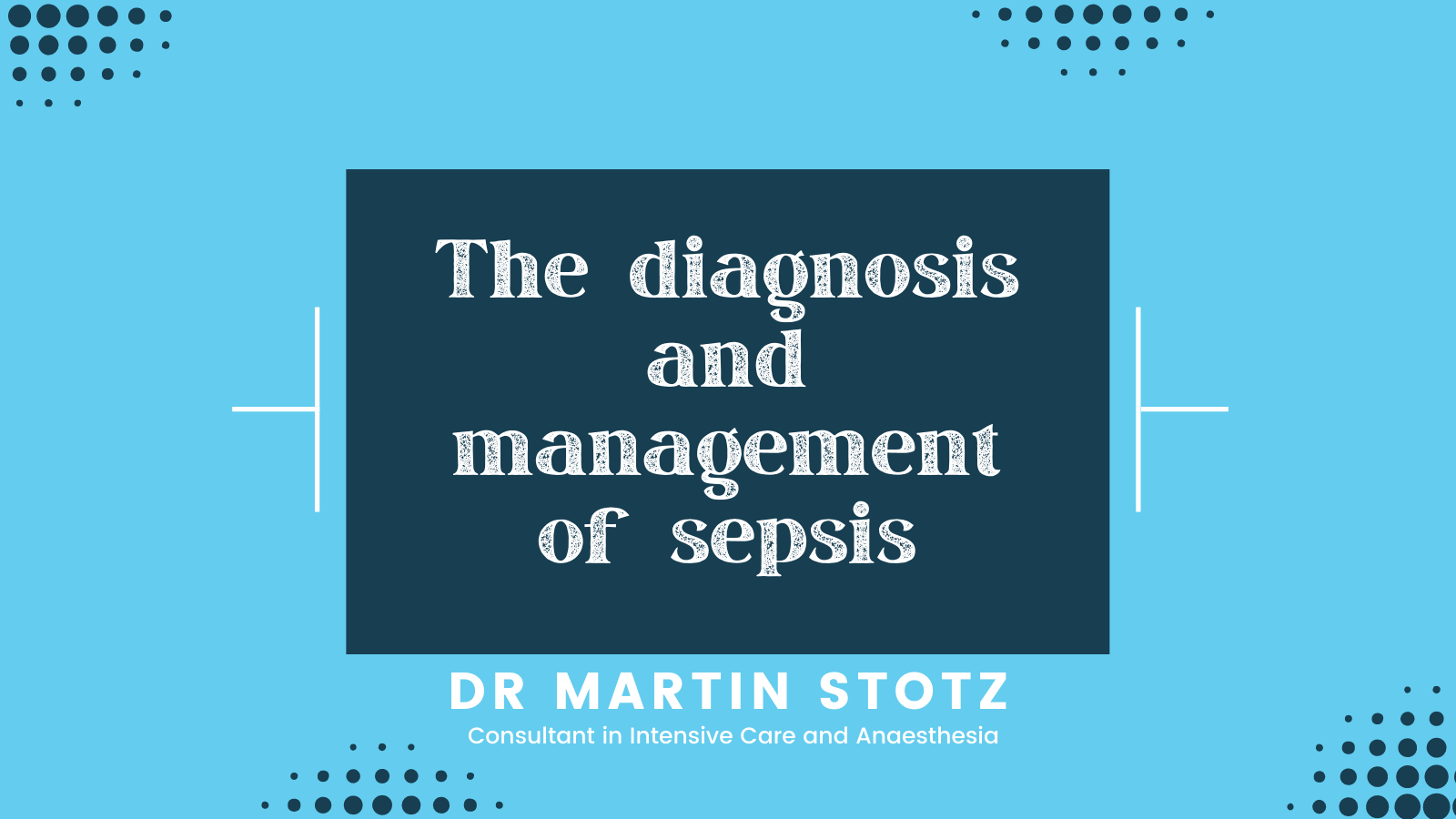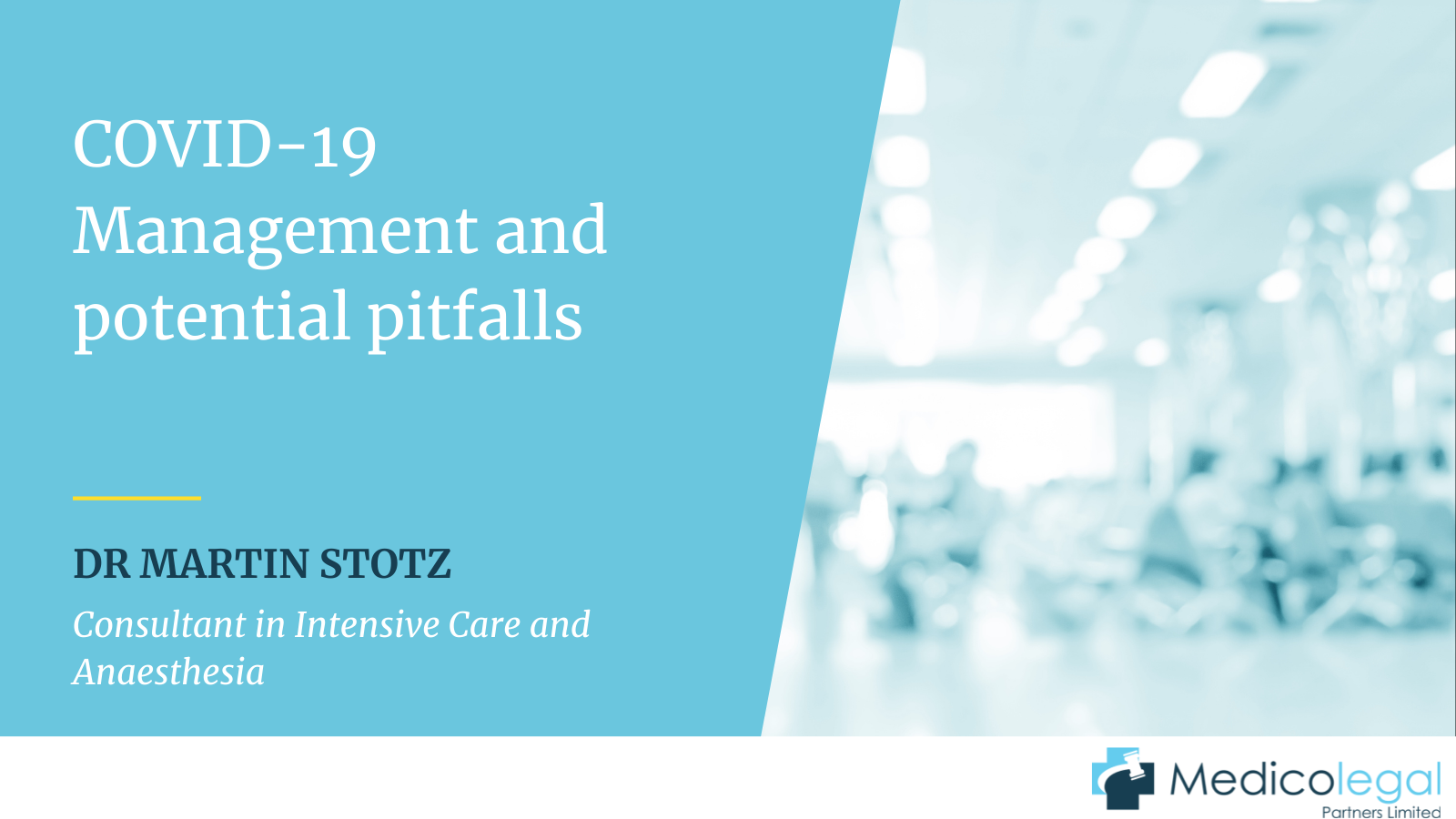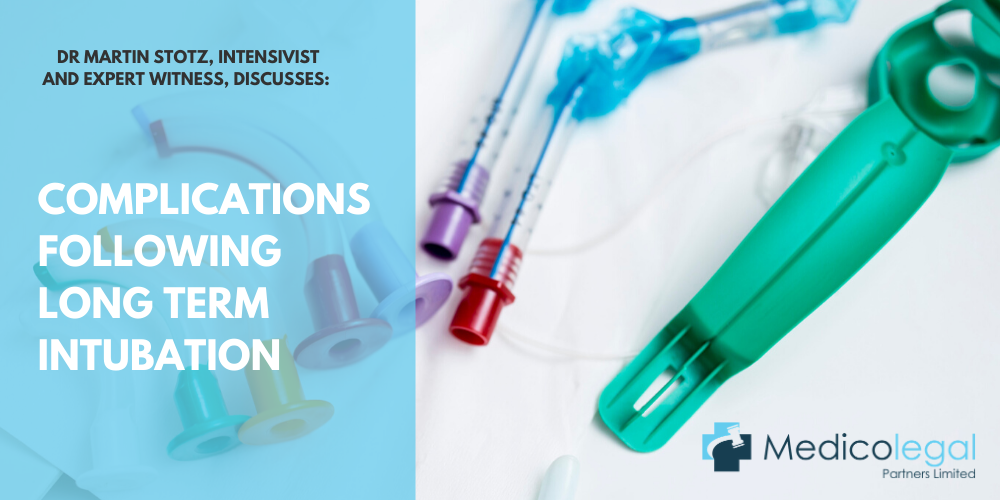The diagnosis and management of Sepsis

Sepsis is a relatively common condition which has very high rates of both morbidity and mortality. In recent years, there has been a significant rise in sepsis-related hospital admissions, both in the UK and other countries. This is thought to be due to a combination of better reporting, an ageing population who are more vulnerable to the conditions leading to sepsis, and antibiotic resistance. Mortality rates vary from 20% for severe sepsis up to 70% for cases of septic shock, and sepsis is responsible for around 20% of all in-hospital deaths annually. This is similar to the proportion resulting from acute myocardial infarction.
Sepsis occurs when the body’s immune system shows an abnormal response to an infection, which ultimately leads to tissue and organ damage. The most common sites for the infections that give rise to sepsis are the respiratory, genitourinary and gastrointestinal systems, along with the skin and soft tissues. While the majority of infections are bacterial, patients may also present with fungal, viral or parasitic infections. The very old and the very young are at particular risk of developing sepsis, and additional risk factors include malnutrition, chronic illness, immunosuppression, recent surgery or hospitalization and indwelling catheters or other similar devices.
Diagnosing sepsis can be a challenge because the signs and symptoms of the condition are non-specific and vary according to the aetiology. Differential diagnoses include hypovolemia, acute blood loss, acute pulmonary embolus, acute myocardial infarction, acute pancreatitis, reaction to a transfusion, diabetic ketoacidosis and adrenal insufficiency. Furthermore, sepsis arising after childbirth or post-operatively may be masked by the pain and changes in body temperature and blood composition expected after these events. Often, a clinical diagnosis needs to be made before the results from culture samples are known. Therefore, this diagnosis must rely on the patient’s symptoms and history of underlying disease, recent surgery or antibiotic use. Missing information may make diagnosis more difficult. Recent updates to the definitions of sepsis and septic shock may make identifying patients easier, particularly those for whom a poor outcome is likely, so that appropriate treatment can be given. If a patient presents with a respiratory rate >22 breaths/minute, a Glasgow Coma Scale <15 and/or systolic blood pressure <100 mmHg, doctors should suspect sepsis and treat accordingly.
The first symptom of sepsis is often fever, accompanied by chills and shivering, an increased heart rate and rapid breathing. At this stage, the condition is often mistaken for flu, a chest infection or gastroenteritis. If left untreated, the patient will rapidly deteriorate, resulting in organ failure, septic shock and, ultimately, death and it is thought that diagnosis is delayed in around one-third of sepsis cases. Symptoms of more advanced disease include fainting and dizziness, disorientation, nausea and vomiting, diarrhoea, reduction in urination and cold, clammy skin. Even if they survive, sepsis patients have higher mortality rates from other conditions after discharge from hospital. Survivors also experience higher rates of post-traumatic stress disorder, physical disability and lung and cognitive dysfunction.
While the mortality rate in sepsis patients has improved in recent years, there is still no specific therapy for the condition, and patient outcomes rely on early recognition and appropriate management. The initial treatment for sepsis centres around resuscitation and respiratory stabilisation, for which supplemental oxygen should be given. Once this has been achieved, subsequent treatment should consist of identification of the infection, prompt antibiotic administration and the removal or drainage of the infection source. This may involve drainage of a pleural effusion, debridement of an infected wound or surgical intervention to drain an abscess. However, in around a quarter of all cases, no obvious source of infection is identified. Despite this, the rapid use of antibiotics to target the likely causative agents shows clear benefits to patients. While the precise timing of administration has not been established, the general consensus is that these drugs should be given as quickly as possible, and ideally within one hour of admission to hospital. It has been estimated that for each hour of delay, mortality increases by 8%.
If hypotension is present, the administration of fluids, such as saline, and vasopressor therapy, usually with norepinephrine, may also be necessary. This is vital, as hypotension is the most common reason for the increased morbidity and mortality experienced by sepsis patients. Tissue hypoxia arising from a delay in administering fluids may result in multiple organ dysfunction. The patient’s response to fluid resuscitation should be assessed by blood pressure, tissue perfusion and urine output. After 12 hours, a positive fluid balance of 3 – 4 litres is considered optimal for survival.
Even with prompt and appropriate treatment, mortality cannot be entirely prevented, particularly where a deep-seated source of infection, such as an abscess, proves resistant to antibiotic therapy and continues to fuel the condition. However, if treatment is started early enough, mortality rates are significantly decreased. Recently, a treatment protocol known as Early Goal-Directed Therapy for Sepsis has been introduced. If implemented within six hours of suspected sepsis or septic shock, this treatment reduces in-hospital mortality by around 45% compared to standard therapy.
About Dr Martin Stotz
Dr Stotz is a Consultant in Intensive Care and Anaesthesia at St Mary’s Hospital in London, where he leads a multi-disciplinary team. St Mary’s Hospital, as part of Imperial College NHS Trust, is a major trauma centre and a tertiary vascular referral centre. Dr Stotz is also an expert witness in Anaesthetics and Intensive Care Medicine and can provide expert opinion on a range of cases relating to most aspects of anaesthesia, the care and management of patients pre, during and post operatively, and the clinical management of critically ill patients for both claimant and defendant.
Further reading:
Evans T. (2018). Diagnosis and management of sepsis. Clinical medicine (London, England), 18(2), 146–149. https://doi.org/10.7861/clinmedicine.18-2-146
Gauer R. L. (2013). Early recognition and management of sepsis in adults: the first six hours. American family physician, 88(1), 44–53.




